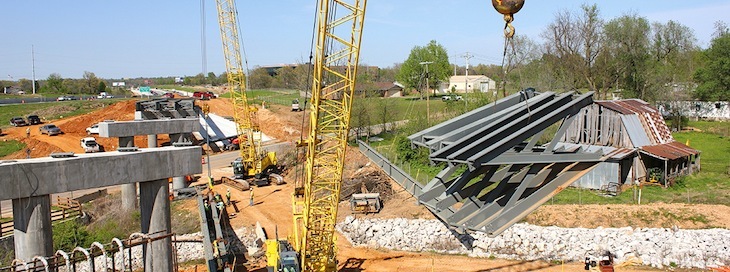Northwest Arkansas rises to 25th in Milken’s ‘Best-Performing’ Index
by January 10, 2018 2:30 pm 1,168 views

The Northwest Arkansas metro is back in the top 25 of the Milken Institute’s Best-Performing Cities Index for 2017, rising from the 30th spot in the 2016 report. The fast-growing region hit the top spot in 2003.
Provo-Orem, Utah, ranked first on the list, with Raleigh, N.C., Dallas-Plano-Irving, San Francisco, and Fort Collins, Colo., rounding out the top five.
The Fayetteville-Springdale-Rogers metro was the only Arkansas region to make the top 25. Out of the 200 cities ranked in the 2017 report, the Memphis metro area, which includes parts of Arkansas, was ranked 148, rising slightly from 149 in 2016. The central Arkansas area was ranked 165, better than the 168 in 2016, and the Fort Smith metro ranked 193, down from 191 in 2016.
Following are the top 10 cities, with their 2016 ranking in parenthesis.
1. Provo-Orem, Utah (2)
2. Raleigh, N.C. (6)
3. Dallas-Plano-Irving, Texas (5)
4. San Francisco-Redwood City-South San Francisco, Calif. (4)
5. Fort Collins, Colo. (8)
6. North Port-Sarasota-Bradenton, Fla. (26)
7. Orlando-Kissimmee-Sanford, Fla. (9)
8. Nashville-Davidson-Murfreesboro-Franklin, Tenn. (7)
9. Austin-Round Rock, Texas (3)
10. Salt Lake City, Utah (11)
The Milken Institute Best-Performing Cities Index has been published annually since 1999, and uses data in nine categories to determine relative growth of metro economies. Jobs, wages and salaries, and technology output over time are some of the metrics measured. The index also measures high-tech fields whose concentrations in a metropolitan area are higher than the national average.
“Metropolitan areas are crucial drivers of growth in the American economy, taking different paths to prosperity depending on their industry mix, policy choices, and available resources. While some parts of the country are thriving, others are falling behind,” Kevin Klowden, executive director of the Milken Institute’s Center for Regional Economics, noted in the report. “Our goal is to help businesses, investors, industry associations, development agencies, government officials, academics, and public-policy groups monitor and evaluate how well their region is adapting to and planning for both current and future economic trends.”
Milken researchers also note that the index does not use “input measures” like cost of living, quality of life, commute times and crime rates.
“These measures, although important, are prone to wide variations and can be highly subjective.”
NORTHWEST ARKANSAS, HISTORY, METRICS
The 2017 report marks the eighth year Northwest Arkansas has made the Milken cut in the top 30. The region was ranked first in 2003, seventh in 2004, eighth in 2005, 21st in 2007, 27th in 2009, 24th in 2015, and 30th in 2016.
“The metro’s recent job gains can be attributed to the healthcare and food manufacturing sectors. Mercy Northwest Arkansas, Northwest Medical Center, Pinnacle Healthcare, and Washington Regional Medical Center altogether employ more than 6,700 workers in the region,” the report noted. “Arkansas Children’s Hospital Northwest campus is expected to open in January 2018 and will add 250 more jobs.”
Also cited in the report was a “high concentration of food-related enterprises” like Tyson Foods, Cargill and George’s Inc. Another asset listed was being the headquarters to Wal-Mart Stores Inc.
Nelson Peacock, president and CEO of Northwest Arkansas Council, said the Milken ranking provides assurance that regional development efforts are working.
“The Milken Institute’s Best-Performing Cities validates the Northwest Arkansas Council’s view that our economy continues to head in the right direction, and we see that play out in the investments our leading companies continue to make in Northwest Arkansas. Our region’s goal is to be among the best in the nation, and the Milken ranking provides validation that our ongoing efforts are working,” Nelson told Talk Business & Politics.
As to liabilities, the report noted: “The lack of high-tech sectors may hinder long-term growth.”
To that point, the region ranked 178 out of 200 in the number of high-tech industries, and ranked 184 out of 200 on high-tech GDP concentration, and 128 on high-tech GDP growth.
In wage growth between 2010 and 2015, the region ranked 12th, and ranked 11th for job growth between 2011-2016.
